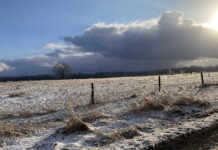More than 2,000 preservationists from across the nation will convene Oct. 8-13 in Cleveland for the National Preservation Conference, the premier preservation educational gathering in the United States.
Participants will include community and neighborhood leaders, public officials, affordable housing practitioners, architects, planners, historic site managers, developers, downtown revitalization specialists and other grassroots activists.
The theme of this year’s annual conference is “Cities, Suburbs and Countryside.”
First time. For the first time in its history, the National Preservation Conference will include a barn tour. The tour will take participants to visit six barns in Geauga County, Ohio.
During the tour, Bill Kimball of the National Trust, along with “barn detectives” Larry Sulzer of Peninsula and Rudy Christian of Burbank, will answer questions about local barn types and the state of barns in Ohio and elsewhere.
For more information call 800-944-6847 or visit www.nthpconference.org.
History overview. The barn may well be the most recognized and ignored architectural form in America.
Its widespread appearance on the agricultural landscape belies the fact that it also may be the most threatened.
The combined effects of changes in agricultural practices, redistribution of population and wealth, the loss of masters of historic building trades and urban sprawl have created tremendous pressure on these once proud icons of the American lifestyle.
Barns represent one of the oldest forms of building in every society.
The practice of agriculture itself creates a need for storage and protection of harvested crops. In many areas of the world, the development of different forms of barns can be traced to the simplest types of construction including sod and dry, stacked stone structures.
As building methodologies evolved, barns often represented the highest levels of trade expertise outside the great cathedrals.
The discovery and subsequent settling of America created a unique and diverse landscape of agricultural architecture. The rapid influx of cultural groups with well-developed practices in agriculture was paralleled by the introduction of many forms of barn construction based on the patterns known to the master builders of the Old World at that time.
How they evolved. Each of these barn types was the result of centuries of evolution in both farming and building.
The differences in climate, soil, social and cultural infrastructure all contributed to the inevitable evolution of the various barn types with the eventual development of many truly American barn forms.
The preservation of these barns in America is both crucial to the understanding of our history and problematic based on the lack of research, documentation, cost and subsequent lack of maintenance, grant programming, and general awareness of their importance.
This tour will introduce you to several barns in northeast Ohio. Some of these barns are still in use as they were originally intended, while some have been adapted to new uses.
You will get to meet their owners, learn something about their past and future, and meet some of the tradesmen who understand what it takes to maintain them.
Then decide for yourself if more could be done to guarantee their place in our future of the American architectural landscape.
Tour highlights. The following are barns featured on the tour:
* Rocky Lane Barn Farm –












